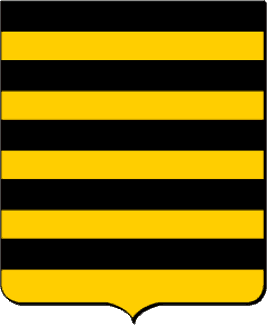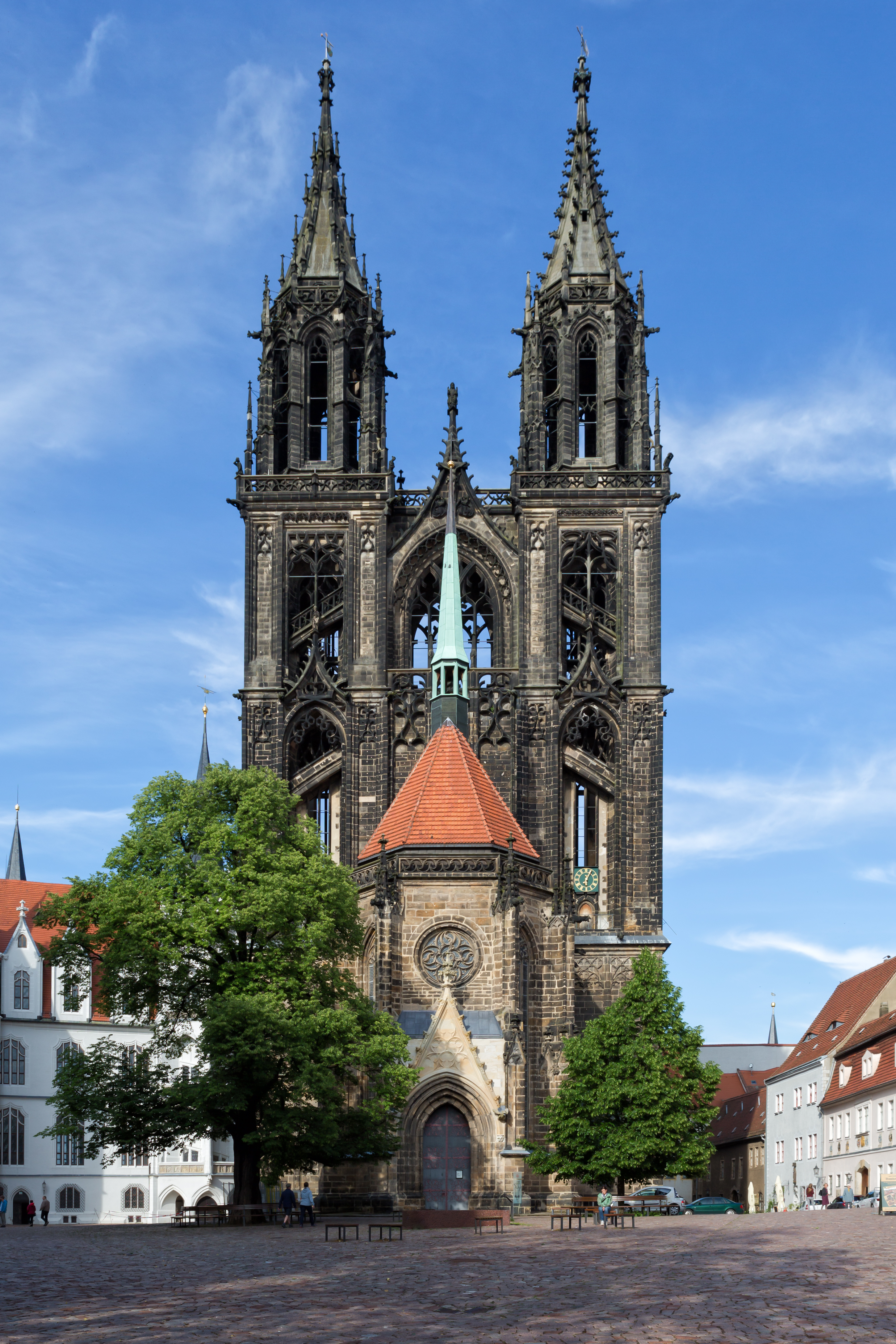|
Hugbert Of Meissen
:''for Hugbert, Duke of Bavaria, see Hugbert of Bavaria'' Hugbert of Meissen (also noted as Hubert, Hukbrecht, Hucbert, Humbert, Umbert, Huprecht, Humprecht, Wipert, Wiprecht, and Rupert; died on or about 27 March 1024 or on 5 April 1024) was Bishop of Meissen from 1023 to 1024. Eduard Machatschek: ''Geschichte der Bischöfe des Hochstiftes Meissen in chronologischer Reihenfolge &c'' (pp. 38-43). Dresden 1884 There is no information on his previous life or career. He was consecrated by Humfrid, Archbishop of Magdeburg. He was buried in Meissen Cathedral Meissen Cathedral or the Church of St John and St Donatus (german: Meißner Dom) is a Gothic church in Meissen in Saxony. It is situated on the castle hill of Meissen, adjacent to the Albrechtsburg castle and forms a critical centrepiece of the ic ..., but the exact position of his burial is now unknown. References Roman Catholic bishops of Meissen Year of birth unknown 1024 deaths {{Germany-RC-bishop-stub ... [...More Info...] [...Related Items...] OR: [Wikipedia] [Google] [Baidu] |
Hugbert Of Bavaria
Hugbert ''(also Hukbert)'' of the Agilolfings was duke of Bavaria from 725 to 736. He was son of the duke Theudebert and Regintrud, the probable daughter of the Seneschal (and Pfalzgraf) Hugobert and Irmina of Oeren. The early death of his father led to disagreement over his successor. Charles Martel tried to make use of the situation in order to gain more control over the independent duchy. Hugbert saw himself forced to give up parts of his duchy, and for a time, Bavarian laws were pronounced in the name of the Merovingian king Theuderic IV. Hugbert started the implementation of his predecessor's plan to create an independent Bavarian church. He did this by having Boniface Christianize the country and by recalling the bishop Korbinian from Freising Freising () is a university town in Bavaria, Germany, and the capital of the Freising ''Landkreis'' (district), with a population of about 50,000. Location Freising is the oldest town between Regensburg and Bolzano, ... [...More Info...] [...Related Items...] OR: [Wikipedia] [Google] [Baidu] |
Bishop Of Meissen
The Bishop of Dresden-Meissen is the ordinary of the Roman Catholic Diocese of Dresden-Meissen in the Archdiocese of Berlin. The diocese covers an area of and was erected as the Diocese of Meissen on 24 June 1921. The name was changed to Dresden-Meissen on 15 November 1979. Bishops and administrators of Meissen (968–1581) The Bishops resided until 1595 in Wurzen. In 1559 the diocesan temporalities within Saxony were seized by the Electorate of Saxony. Apostolic prefects of Meissen (1567–1921) In the Meisen diocesan area located outside of then Saxony in Lower and Upper Lusatia there was no immediate overlord, since the then liege lord of the Two Lusatias, the Catholic king of Bohemia (in personal union Holy Roman Emperor) held the Lusatias as fief outright. The Kings of Bohemia did not effectively offend the spreading of the Protestant Reformation in the Two Lusatias. So it depended on the local vassals if Lutheranism prevailed or not, following the principle of Cuius ... [...More Info...] [...Related Items...] OR: [Wikipedia] [Google] [Baidu] |
Humfrid (bishop)
Humfrid or Hunfrid (died 28 February 1051) was the archbishop of Magdeburg from 1023 until his death. He was with the court of the Emperor Henry III Henry III (28 October 1016 – 5 October 1056), called the Black or the Pious, was Holy Roman Emperor from 1046 until his death in 1056. A member of the Salian dynasty, he was the eldest son of Conrad II and Gisela of Swabia. Henry was raised b ... when, in the summer or 1040 the newly rebuilt church of Hersfeld was reconsecrated.Bernhardt, 256. Notes Sources *Bernhardt, John W. ''Itinerant Kingship and Royal Monasteries in Early Medieval Germany, c. 936–1075''. Cambridge: Cambridge University Press, 1993. 1051 deaths Archbishops of Magdeburg Year of birth unknown 11th-century German bishops {{Germany-RC-archbishop-stub ... [...More Info...] [...Related Items...] OR: [Wikipedia] [Google] [Baidu] |
Archbishop Of Magdeburg
The Archbishopric of Magdeburg was a Roman Catholic archdiocese (969–1552) and Prince-Archbishopric (1180–1680) of the Holy Roman Empire centered on the city of Magdeburg on the Elbe River. Planned since 955 and established in 968, the Roman Catholic archdiocese had de facto turned void since 1557, when the last papally confirmed prince-archbishop, the Lutheran Sigismund of Brandenburg came of age and ascended to the see and the Magdeburg Cathedral chapter had adopted Lutheranism in 1567, with most parishioners having preceded in their conversion. All his successors were only administrators of the prince-archbishopric and Lutheran too, except the Catholic layman Leopold William of Austria (1631–1635). In ecclesiastical respect the remaining Catholics and their parishes and abbeys in the former archdiocese were put under supervision of the Archdiocese of Cologne in 1648 and under the jurisdiction of the Apostolic Vicariate of the Northern Missions in 1670. In political ... [...More Info...] [...Related Items...] OR: [Wikipedia] [Google] [Baidu] |
Meissen Cathedral
Meissen Cathedral or the Church of St John and St Donatus (german: Meißner Dom) is a Gothic church in Meissen in Saxony. It is situated on the castle hill of Meissen, adjacent to the Albrechtsburg castle and forms a critical centrepiece of the iconic Meissen skyline overlooking the River Elbe in the valley below. History It was the episcopal see of the Bishopric of Meissen established by Emperor Otto I in 968. It replaced an older Romanesque church. The present-day hall church was built between 1260 and 1410, the interior features Gothic sculptures of founder Emperor Otto and his wife Adelaide of Italy as well as paintings from the studio of Lucas Cranach the Elder. The first Saxon elector from the House of Wettin, Margrave Frederick I, had the Prince's Chapel erected in 1425 as the burial place of his dynasty. The twin steeples were not attached until 1909. In 1581 the Meissen diocese was dissolved in the course of the Protestant Reformation, and the church was used by the P ... [...More Info...] [...Related Items...] OR: [Wikipedia] [Google] [Baidu] |
Eilward
Eilward (also noted as Agilward, Elvart, Eilbart, Erward, Ediward, Eduard, Hildeward or Hildebert; d. 24 November 1023), a member of the Saxon noble house of the Ekkehardiner( de), was Bishop of Meissen from 1016 to 1023.Eduard Machatschek (ed.): ''Geschichte der Bischöfe des Hochstiftes Meissen in chronologischer Reihenfolge'' (pp. 32–38). Dresden 1884 Eilward, a younger son of Margrave Ekkehard I of Meissen and his wife Schwanhild, daughter of Hermann Billung, was appointed bishop by Emperor Henry II. During his years in office his brother was Margrave of Meissen This article lists the margraves of Meissen, a march and territorial state on the eastern border of the Holy Roman Empire. History King Henry the Fowler, on his 928-29 campaign against the Slavic Glomacze tribes, had a fortress erected on a ... as Hermann I. References Roman Catholic bishops of Meissen 1023 deaths Year of birth unknown House of Ekkehardiner {{Germany-RC-bishop-stub ... [...More Info...] [...Related Items...] OR: [Wikipedia] [Google] [Baidu] |
Dietrich I Of Meissen
Dietrich I, otherwise Theoderich (died 1039 or 1040), was Bishop of Meissen from 1024 to late 1039 or early 1040. Life Dietrich was consecrated as Bishop of Meissen by Humfrid, Archbishop of Magdeburg. There is no information on his previous life or career. He founded St. Afra's Priory, Meissen. He took part in the Synod of Frankfurt of 1027 convened by Emperor Conrad II, of which Wolfhere of Hildesheim gave an account.Heinz Wolter: ''Die Synoden im Reichsgebiet und in Reichsitalien von 916 bis 1056'', pp. 332-338 (Konziliengeschichte, ed. Walter Brandmüller, Reihe A: Darstellungen). Schöningh, Paderborn u.a. 1988. During his episcopate Meissen and Lusatia became a theatre of war between the Emperor and Mieszko II Lambert. The Emperor destroyed the temples and idols of the Wends and excluded those who refused to convert to Christianity from any position of power or privilege.Eduard Machatschek: ''Geschichte der Bischöfe des Hochstiftes Meissen in chronologischer Reihenfolge ( ... [...More Info...] [...Related Items...] OR: [Wikipedia] [Google] [Baidu] |
Roman Catholic Bishops Of Meissen
Roman or Romans most often refers to: *Rome, the capital city of Italy *Ancient Rome, Roman civilization from 8th century BC to 5th century AD *Roman people, the people of ancient Rome *''Epistle to the Romans'', shortened to ''Romans'', a letter in the New Testament of the Christian Bible Roman or Romans may also refer to: Arts and entertainment Music *Romans (band), a Japanese pop group * ''Roman'' (album), by Sound Horizon, 2006 * ''Roman'' (EP), by Teen Top, 2011 *"Roman (My Dear Boy)", a 2004 single by Morning Musume Film and television *Film Roman, an American animation studio * ''Roman'' (film), a 2006 American suspense-horror film * ''Romans'' (2013 film), an Indian Malayalam comedy film * ''Romans'' (2017 film), a British drama film * ''The Romans'' (''Doctor Who''), a serial in British TV series People *Roman (given name), a given name, including a list of people and fictional characters *Roman (surname), including a list of people named Roman or Romans *Ῥωμαῖ ... [...More Info...] [...Related Items...] OR: [Wikipedia] [Google] [Baidu] |
Year Of Birth Unknown
A year or annus is the orbital period of a planetary body, for example, the Earth, moving in its orbit around the Sun. Due to the Earth's axial tilt, the course of a year sees the passing of the seasons, marked by change in weather, the hours of daylight, and, consequently, vegetation and soil fertility. In temperate and subpolar regions around the planet, four seasons are generally recognized: spring, summer, autumn and winter. In tropical and subtropical regions, several geographical sectors do not present defined seasons; but in the seasonal tropics, the annual wet and dry seasons are recognized and tracked. A calendar year is an approximation of the number of days of the Earth's orbital period, as counted in a given calendar. The Gregorian calendar, or modern calendar, presents its calendar year to be either a common year of 365 days or a leap year of 366 days, as do the Julian calendars. For the Gregorian calendar, the average length of the calendar year ... [...More Info...] [...Related Items...] OR: [Wikipedia] [Google] [Baidu] |



